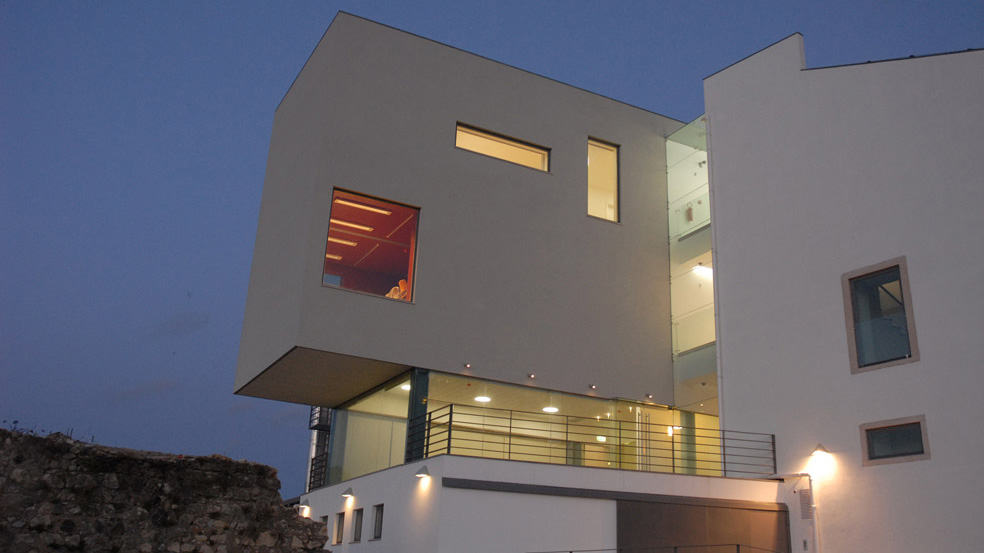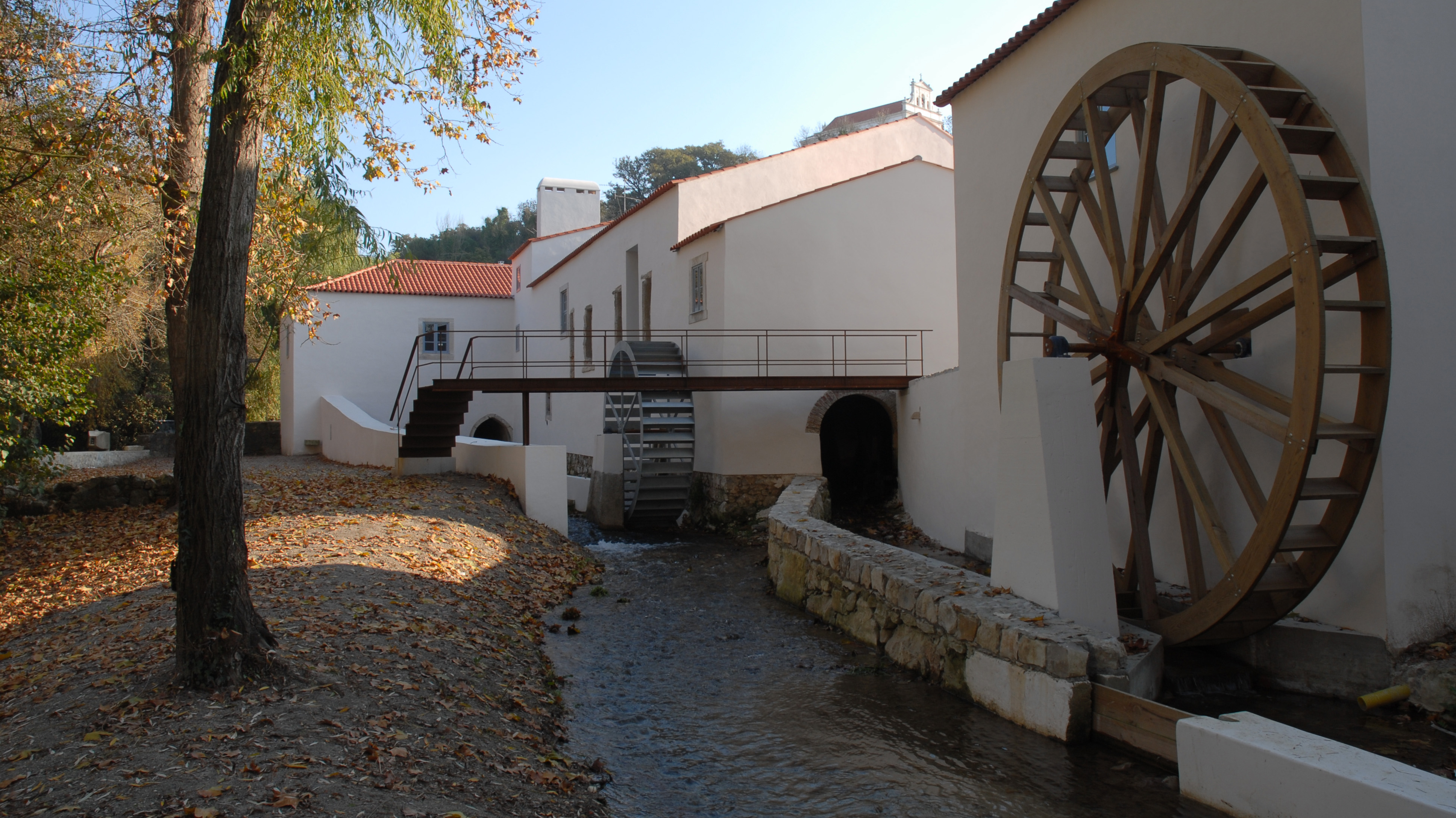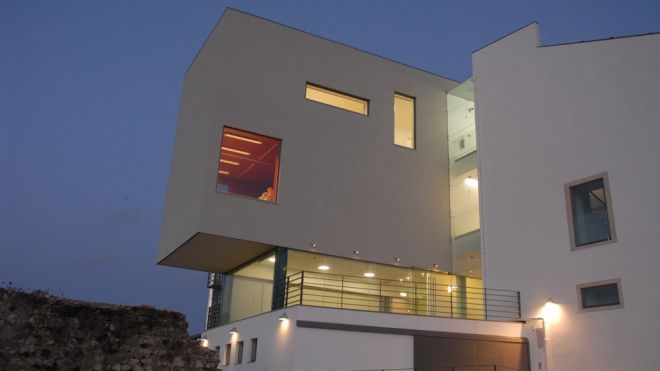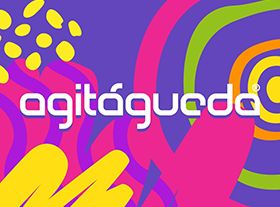Visit to Leiria

Leiria is a Creative City of Music. This distinction, made by UNESCO, reflects the innovative spirit of a vibrant city where music is just the motto for discovering the cultural, architectural and landscape heritage of a city created in 1142 by King Afonso Henriques, the first king of Portugal.
The discovery of the city bathed by the Lis River begins at Praça Rodrigues Lobo. The name of the square, with its many terraces and Portuguese pavements, honours the poet and writer who was born in Leiria in 1580. It is a meeting point for Leiria inhabitants and visitors and is the stage for various cultural and sporting initiatives throughout the year. The novel "The Crime of Father Amaro" by Eça de Queiróz, published in 1875 and considered the first literary work of Portuguese realism, makes several references to the square and other places in the city that inspired the plot.
From the heart of the city, you soon reach the House of the Creative City of Music (Casa da Cidade Criativa da Música), a work by architect Gonçalo Byrne. The mirrored building reflects the Leiria Castle (Castelo de Leiria) on one of its façades, making it even more imposing. It is a space dedicated to the development and promotion of cultural projects, with artist residencies, embodying the mission set out for the city: creativity, culture and sustainable development.

M|i|mo - Museu da Imagem em Movimento
It is worth going up to the Castle, which has an unavoidable place in Leiria's identity and image. From the emblematic arcade, the view over the city is breathtaking. Inside the imposing walls, you can see countless traces of the various phases of occupation and construction, including the refurbishment work carried out by the Swiss architect Ernesto Korrodi at the end of the 19th century. An important figure in the city's history, he was also responsible for numerous buildings that you can find in the streets of Leiria, such as the current Arts Bank (Banco das Artes), a building that housed a branch of the Bank of Portugal, or the Cultural Centre Market of Sant'Ana (Centro Cultural Mercado de Sant’Ana).
In the square that leads to the Castle and near the medieval Church of St. Peter (Igreja medieval de S. Pedro), a modern building will catch your eye. It's the m|i|mo - Museum of the Moving Image (Museu da Imagem em Movimento), a space dedicated to cinema and photography that is well worth a visit.
Heading back towards the city centre, wander through the narrow streets of the historic centre. Rua Barão de Viamonte or Rua Direita, as it is commonly known, connects Largo da Sé to Praça do Terreiro. It is one of the main streets, with local shops, restaurants and handicrafts, as well as a crossing point for cultural routes dedicated to literary routes, urban art or street entertainment.
Continue on to Largo da Sé to see Leiria Cathedral (Catedral de Leiria), a church built in 1550 which unique feature is that the bell tower is set back from the main building. During the 1755 earthquake, the church suffered serious damage and a new Baroque-style tower had to be built next to one of the old gates in the castle wall, the Sun Gate (Porta do Sol) or South Gate. Also in the square is an old building with several tiled panels from the Romantic period, in the 19th century. The Paiva family pharmacy operated in the building and the tiled façade is one of the few examples of this period in Leiria and an interesting advertising feature.
In Largo Paio Guterres, also known as Black Cat Square (Largo do Gato Preto) (when you look at the pavement you quickly realise the origin of the name), the Painters House (Casa dos Pintores) is worth a look. This small building, which now houses the Leiria Intercultural Dialogue Centre (Centro de Diálogo Intercultural de Leiria), is a significant piece of historical architecture, an example of the city's medieval urban layout and represents the oldest type of dwelling in Leiria's historic centre. It is so called because of the large number of artists who have depicted its façade.
Still in the city's historic centre, but now in Rua Afonso de Albuquerque, a new architectural element by the architect Korrodi embellishes the route. This is Arch House (Casa do Arco), where the Hospital and Casa da Misericórdia once stood.
But there's plenty to see and do in the city. Strolling along the banks of the Lis River along the identified pedestrian route – Polis Path (Percurso Polis) - is an option that is accessible to everyone, whether you're calmly contemplating the riverside scenery and the different bridges along the way, or you want to enjoy a space for practising sport at any time of the year.
Next to the left bank of the Lis River is the Church and Convent of St. Augustine (Igreja e o Convento de Santo Agostinho). The whole of these two buildings, which currently houses the Leiria Museum (Museu de Leiria), is classified as a Property of Public Interest. The altarpiece in the main chapel of the church was designed by the architect Ernesto Korrodi at the beginning of the 20th century. The Leiria Museum's collection includes municipal collections and the archaeological reserve, which bear witness to the experiences of a long-inhabited territory. The museum is often the venue for concerts and has received numerous national and international awards since it opened.
A little further on, still on the left bank of the river, you can see the Paper Mill (Moinho de Papel). Its history dates back to 1411 and it was probably one of the first mills of its kind to appear on the Iberian Peninsula. The building was restored by the Atelier of architect Siza Vieira.

Moinho de Papel
During your visit or, if you prefer, at the end, you can enjoy a Brisa do Lis, a local convent confectionery delicacy consisting of a small cake made from egg yolks, sugar and almonds. It's even better if you do it at the top of the hill where you'll find the Sanctuary of Our Lady of the Incarnation (Santuário de Nossa Senhora da Encarnação), a monument built in the 16th century and reached by an 18th century baroque staircase with 162 steps. Our Lady of the Incarnation is the patron saint of Leiria and her feast day is held every year on 15 August.











 Explore
Explore 
 Remember and Share
Remember and Share 


